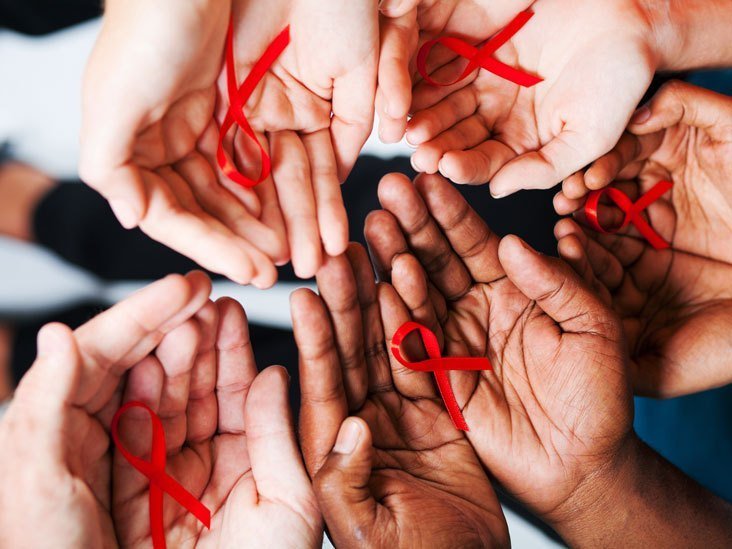Back to: CIVIC EDUCATION SS1
Welcome to class!
In today’s class, we will be talking more about HIV/AIDS. Enjoy the class!
HIV/AIDS II

Preventive measure of HIV/AIDS
- Distribution of sterilized objects such as needles, syringes, and other equipment to hospitals.
- Destruction of used needles, syringes and other equipment.
- Screening of blood before transfusion.
- Avoiding contact with an infected body fluid such as blood.
- Avoiding unprotected or indiscriminate sexual contact or relationship.
- Encouraging protective sex through the use of a condom. Always use a condom if you must have a casual sex relationship, though it is not 100% safe.
- Establishment and operation of drug treatment facilities.
- Establishment of drug substitution therapy programs.
- Referral for drug treatment/ Anti-Retroviral Therapy (ART) and rehabilitation.
- Promotion of Voluntary Counseling Testing (VCT) knowing one’s HIV/AIDS status.
- Avoid sharing of any piercing and sharp cutting objects with other people eg, razor blade, knives, needles, syringes, clippers, etc.
- Carefully screen blood donated by people before transfusion.
- Maintain a personal discipline or self-control in order to uphold moral integrity.
- Promotion of Sexually Transmitted Infections (STI) education/teaching of sex/HIV/AIDS education in schools.
- Creating awareness about other means of transmitting HIV/AIDS.
- Educating the people so as to be aware of the dangers of contracting the disease.
- Treatment of opportunistic infections eg STI.
- Encouraging medical personnel managing HIV/AIDS patients to ensure adequate protection during treatment.
- Wearing of hand gloves either rubber of nylon during or when one has to deal with HIV/AIDS infected person.
- Establishment of mobile outreach centres for the Most at Risk Population/vulnerable people.
- Pregnant women should be tested for HIV/AIDS and treated if necessary to avoid mother to child transmission.
- Provision of job opportunities for the people by the government so that they can shy away from illicit and immoral activities.
- Constant and periodic test by individuals and married couples
- Encouraging abstinence from sex by unmarried people
- Encouraging faithfulness to one’s spouse/partner.
Ways to manage HIV/AIDS
- Taking the recommended Anti-Retroviral Therapy (ART) drugs as at when due.
- Eating a balanced diet.
- Staying positive about survival.
- Engaging in productive exercises.
- Discouraging stigmatization of People Living with HIV/AIDS (PLWHAS).
- Subsidizing the cost of treatment of People Living with HIV/AIDS (PLWHAS).
- Early discovery of one’s HIV status.
- Going for regular medical counselling.
- Giving employment to People Living with HIV/AIDS (PLWHAS).
- Creating awareness on the management of HIV/AIDS through the mass media.
- The teaching of sex/HIV/AIDS education in schools.
How to care for people with HIV/AIDS
- Showing love, respect and support
- Knowing the facts about HIV/AIDS and talking openly about the disease
- Helping to reduce stress and stressful situations
- Helping to provide balanced and nutritious meals
- Encouraging them to get treatment if they are sick. Most infections are easily treated and cured, even if a person is HIV positive
Stigmatization of PLWHA (People Living with HIV/AIDS)
Stigmatization and discrimination against PLWHA have been one of the hallmarks of the global HIV/AIDs pandemic. Stigma may be defined as any attribute that is deeply discrediting and results in the reduction of a person or group “from a whole and usual person to a tainted, discounted one”. In order word, it is the assignment of negative perceptions to or discrimination against people living with HIV due to the perceived threat of the disease. Stigmatization could lead to delays and failures in seeking treatment by PLWHA and delays in diagnosis of high-risk patients. It could also lead to a denial of rights to health, education, and employment.
In our next class, we will be talking about Youth Empowerment. We hope you enjoyed the class.
Should you have any further question, feel free to ask in the comment section below and trust us to respond as soon as possible.

Brify explain the meaning of chose prevetion for breast cancer in your not